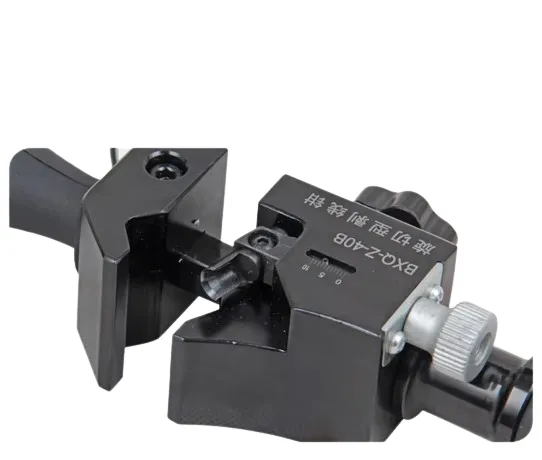
-
 Afrikaans
Afrikaans -
 Albanian
Albanian -
 Amharic
Amharic -
 Arabic
Arabic -
 Armenian
Armenian -
 Azerbaijani
Azerbaijani -
 Basque
Basque -
 Belarusian
Belarusian -
 Bengali
Bengali -
 Bosnian
Bosnian -
 Bulgarian
Bulgarian -
 Catalan
Catalan -
 Cebuano
Cebuano -
 Corsican
Corsican -
 Croatian
Croatian -
 Czech
Czech -
 Danish
Danish -
 Dutch
Dutch -
 English
English -
 Esperanto
Esperanto -
 Estonian
Estonian -
 Finnish
Finnish -
 French
French -
 Frisian
Frisian -
 Galician
Galician -
 Georgian
Georgian -
 German
German -
 Greek
Greek -
 Gujarati
Gujarati -
 Haitian Creole
Haitian Creole -
 hausa
hausa -
 hawaiian
hawaiian -
 Hebrew
Hebrew -
 Hindi
Hindi -
 Miao
Miao -
 Hungarian
Hungarian -
 Icelandic
Icelandic -
 igbo
igbo -
 Indonesian
Indonesian -
 irish
irish -
 Italian
Italian -
 Japanese
Japanese -
 Javanese
Javanese -
 Kannada
Kannada -
 kazakh
kazakh -
 Khmer
Khmer -
 Rwandese
Rwandese -
 Korean
Korean -
 Kurdish
Kurdish -
 Kyrgyz
Kyrgyz -
 Lao
Lao -
 Latin
Latin -
 Latvian
Latvian -
 Lithuanian
Lithuanian -
 Luxembourgish
Luxembourgish -
 Macedonian
Macedonian -
 Malgashi
Malgashi -
 Malay
Malay -
 Malayalam
Malayalam -
 Maltese
Maltese -
 Maori
Maori -
 Marathi
Marathi -
 Mongolian
Mongolian -
 Myanmar
Myanmar -
 Nepali
Nepali -
 Norwegian
Norwegian -
 Norwegian
Norwegian -
 Occitan
Occitan -
 Pashto
Pashto -
 Persian
Persian -
 Polish
Polish -
 Portuguese
Portuguese -
 Punjabi
Punjabi -
 Romanian
Romanian -
 Russian
Russian -
 Samoan
Samoan -
 Scottish Gaelic
Scottish Gaelic -
 Serbian
Serbian -
 Sesotho
Sesotho -
 Shona
Shona -
 Sindhi
Sindhi -
 Sinhala
Sinhala -
 Slovak
Slovak -
 Slovenian
Slovenian -
 Somali
Somali -
 Spanish
Spanish -
 Sundanese
Sundanese -
 Swahili
Swahili -
 Swedish
Swedish -
 Tagalog
Tagalog -
 Tajik
Tajik -
 Tamil
Tamil -
 Tatar
Tatar -
 Telugu
Telugu -
 Thai
Thai -
 Turkish
Turkish -
 Turkmen
Turkmen -
 Ukrainian
Ukrainian -
 Urdu
Urdu -
 Uighur
Uighur -
 Uzbek
Uzbek -
 Vietnamese
Vietnamese -
 Welsh
Welsh -
 Bantu
Bantu -
 Yiddish
Yiddish -
 Yoruba
Yoruba -
 Zulu
Zulu


Nov . 08, 2024 09:58 Back to list
Overhead Cable Winches for Industrial Lifting and Rigging Solutions
Understanding Overhead Winches A Comprehensive Overview
Overhead winches are essential mechanical devices widely used in various industries for lifting and lowering loads. Their design and functionality offer significant advantages in terms of safety, efficiency, and versatility, making them a vital component in construction sites, warehouses, and manufacturing facilities.
What is an Overhead Winch?
An overhead winch is a type of hoisting machinery that operates using a drum or spool, which winds and unwinds a cable or rope to lift heavy objects. They are typically mounted on overhead structures, allowing for greater maneuverability and minimizing floor space usage. The primary function of overhead winches is to hoist materials vertically while providing the ability to traverse horizontally if equipped with additional mechanisms, such as a trolley system.
Key Components
Overhead winches consist of several crucial components that work together to ensure efficient operation
1. Winch Drum The drum is the core part of the winch, where the rope or cable is wound. It is designed to handle the tensile strength of the load and provide smooth operation.
2. Motor Most modern winches are powered by electric motors, although hydraulic and pneumatic options exist. The choice of motor affects the winch's lifting capacity and speed.
3. Gear System The gear system is responsible for transferring the motor’s rotational energy to the drum, enabling it to lift heavy loads efficiently.
4. Control System Overhead winches are equipped with advanced control systems that allow operators to manage lifting speed, direction, and load weight. Control can be manual or automatic, with options for remote operation.
5. Safety Features Incorporating safety features such as overload protection, emergency stop switches, and limit switches is crucial. These mechanisms prevent accidents and equipment damage by stopping operation if the load exceeds safe limits.
Applications of Overhead Winches
The versatility of overhead winches allows them to be used across various sectors, including
overhead winch

- Construction In construction sites, overhead winches are invaluable for lifting beams, trusses, and other heavy materials into place. Their ability to operate in tight spaces makes them particularly useful in urban environments.
- Manufacturing In manufacturing plants, overhead winches assist in transporting heavy components along assembly lines, increasing productivity and reducing manual labor requirements
.- Shipping and Warehousing Overhead winches play a critical role in loading and unloading goods from shipping containers and pallets, facilitating efficient inventory management and logistics.
- Entertainment Industry In theaters and studios, overhead winches are utilized for rigging lights and scenery, allowing for dynamic stage designs and safety during performances.
Advantages of Using Overhead Winches
The implementation of overhead winches in various applications offers numerous advantages, including
- Space Efficiency Their overhead design frees up valuable floor space, enabling better utilization of the area below.
- High Load Capacity Overhead winches are capable of lifting substantial weights, making them suitable for heavy-duty applications.
- Enhanced Safety Modern winches are designed with multiple safety features, minimizing the risk of accidents and injuries on the job site.
- Increased Productivity By automating the lifting and moving of materials, overhead winches streamline operations and reduce manual labor, leading to improved productivity levels.
Conclusion
Overhead winches are indispensable tools in various industrial applications, providing safety, efficiency, and versatility. Their advanced designs and safety features help to streamline operations while minimizing risks associated with heavy lifting. As industries continue to evolve, overhead winches will undoubtedly play a crucial role in optimizing workflows and enhancing safety standards. Understanding their components, applications, and benefits will ensure that businesses can effectively leverage this equipment to achieve their operational goals.
Latest news
What Are Construction Tools and How Are They Used?
NewsJul.11,2025
Professional-Grade Duct Rodding Tools for Superior Cable Installation
NewsJul.11,2025
Enhancing Safety and Efficiency with Modern Hot Stick Solutions
NewsJul.11,2025
Empowering Cable Installation with Advanced Rodder Solutions
NewsJul.11,2025
Elevate Your Cable Installation Projects with Cable Pulling Tools
NewsJul.11,2025
Efficient Cable Handling Solutions: Cable Rollers for Sale
NewsJul.11,2025











